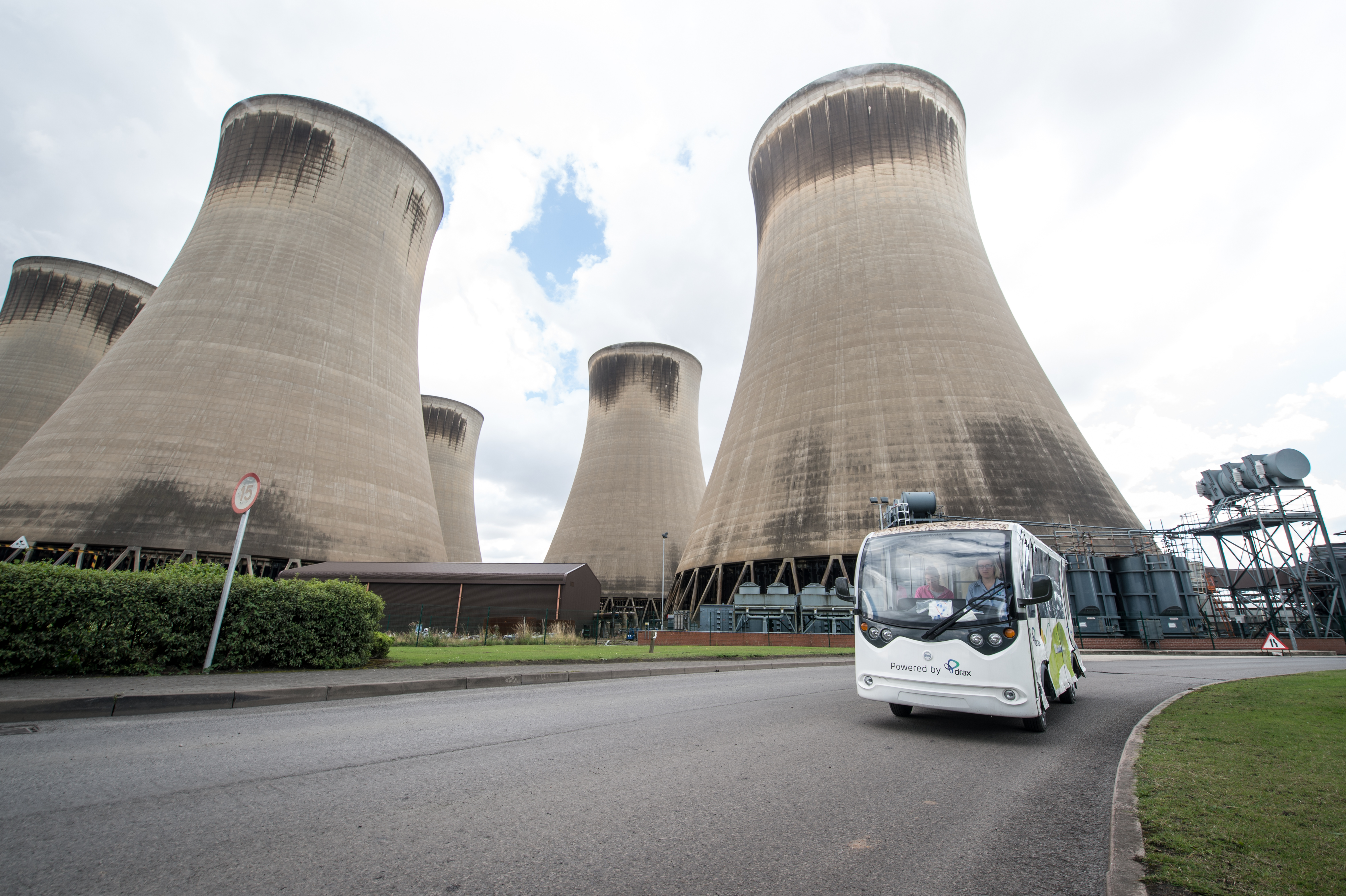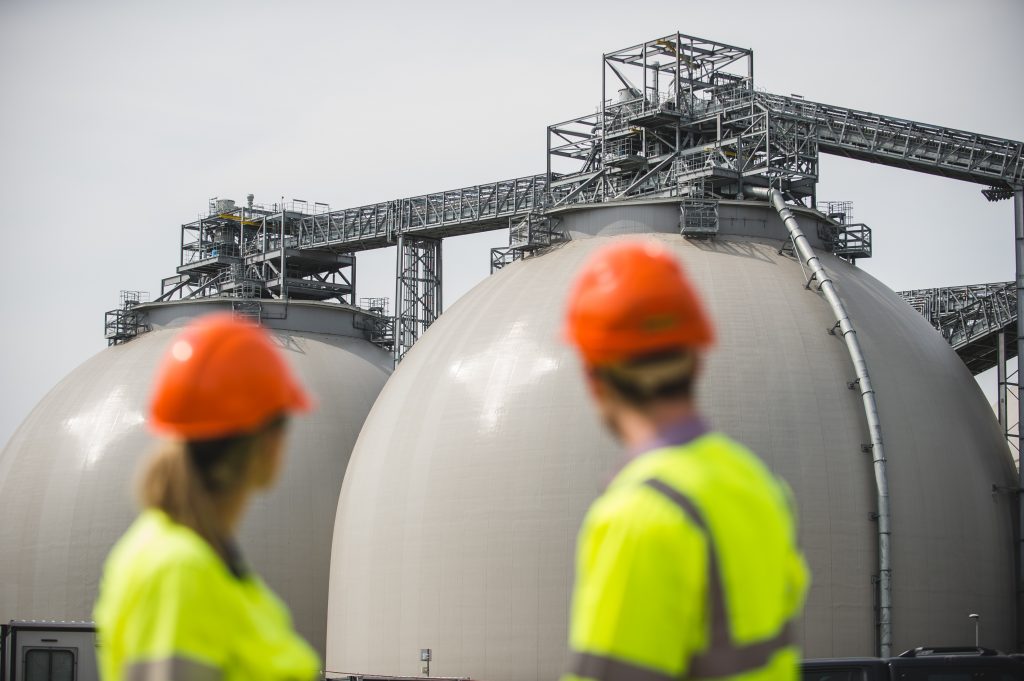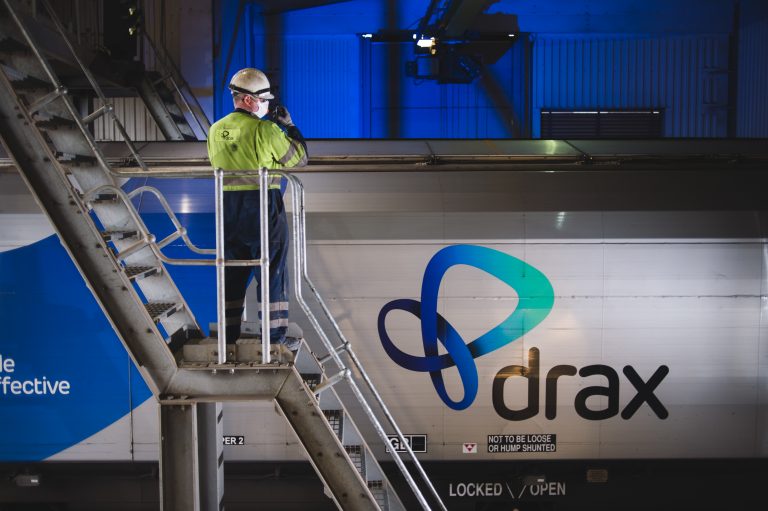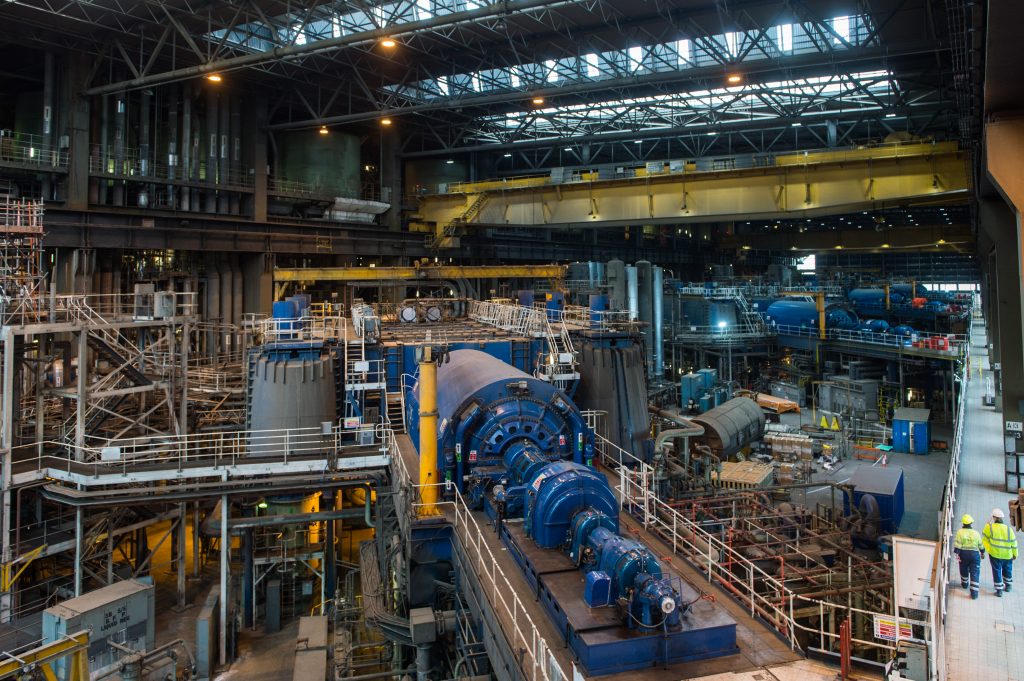
Chimneys taller than the London Eye, domes bigger than the Albert Hall and enough steel tubing to run the length of the UK twice, Drax Power Station is a structure of superlatives. But it’s visiting the site that truly drives home the scale of the electricity generating process.
From tiny biomass pellets to landscape-shaping cooling towers, here are seven of the most-impressive and interesting parts of Drax Power Station.
Cooling towers
Arguably the power station’s most recognisable landmarks, Drax’s 12 giant cooling towers each measure 114 metres tall. To put that in perspective, each is large enough to fit the entire Statue of Liberty inside it – with room to spare.
These massive concrete structures cool the water used as part of the generation process. Water is pumped into the tower at roughly 40 degrees Celsius and is cooled by air naturally pulled into the structure by its unique shape. Once the water is cooled it is safely returned to the River Ouse.
So, what’s coming out the top of a cooling tower? Water vapour, and it only accounts for roughly 2% of all the water pumped into the tower.

Biomass domes
Standing 65 metres tall, Drax’s four biomass domes are each larger than the Royal Albert Hall and between them hold approximately 300,000 tonnes of compressed wood pellets – enough to power Leeds, Manchester, Sheffield and Liverpool for more than 12 days.
Each dome was constructed by inflating a massive PVC dome, coating its inside with a layer of polyurethane foam, and then adding steel and concrete reinforcements. Because of the sensitive nature of compressed wood pellets, the environment inside each dome must be very carefully monitored. One of the measures to keep the biomass inert is to feed in nitrogen (extracted from the air) into the dome.

Rail unloading bay
Coal’s days traversing the UK by train are almost numbered – biomass is taking over its routes. Compressed wood pellets arrive to English shores at the ports of Liverpool, Hull and Immingham and are then transported across the country in specially designed trains. Roughly 14 arrive every day, collectively unloading about 20,000 tonnes of pellets.
Drax’s bespoke wagons ensure the wood pellets are kept dry during transportation and unloaded as efficiently as possible. This includes a hatch on the bottom of the wagons that is opened magnetically to drop the pellets down into the collection area as they arrive.

Turbine hall
Here’s where the magic happens – it’s in the turbine hall that electricity is generated. Biomass is fast replacing coal to be combusted to produce steam, which is used to spin massive electromagnets at 3,000 rpm inside copper windings, which in turn generates electricity.
With each of the six turbines capable of exporting over 600 megawatts (MW) into the National Grid, the total capacity of Drax Power Station sits just shy of 4,000 MW, 70% of which now comes from sustainable biomass – an impressive 17% of Great Britain’s renewable electricity from this one, epic site.

Control room
The nerve centre of the power station, data from across the plant is fed into the control room, giving engineers a view of every stage of the generation process. The information displayed across the web of dials and screens around the room shows data on temperatures, levels or positioning of equipment, and enables operators to monitor and adjust activity around the plant.
This command and control centre at the heart of Drax Power Station is off the beaten track of most tours – so if seeing it is top of your list, please say-so on the tour booking form. As impressive as the control room and on the regular tour is the Queen’s Gallery, giving a birds-eye view over the turbine hall.

Visitor centre
First port of call on a tour of Drax Power Station, the visitor centre offers an interactive history of Drax, from when construction began in the 1960s, via coal’s decline as a fuel source and through to the modern, predominantly-biomass power plant of today.
It’s here that visitors can step inside the electricity generation process and learn from Drax’s experienced guides about what happens at the heart of the UK’s largest power plant.

The Skylark Centre and Nature Reserve
Away from the noise of the turbine hall, a weekend trip to Drax also offers the chance to enjoy a peaceful walk through a unique natural environment. The Skylark Centre and Nature Reserve, Drax is home to more than 100 species of wildlife, including rare and endangered varieties guests might encounter along the reserve’s nature walks.
The centre offers the chance to learn more about this environment, its inhabitants and the unique story of its creation. The reserve is spread across Barlow Mound, a structure created as a means of safely storing the ash created in burning coal at the power station. More than 301 million m3 of ash is safely stored in the current site, on top of which grasses and trees have been planted to allow nature to thrive.
Its reinvention into an area of natural beauty reflects the power station’s own transformation away from coal.








